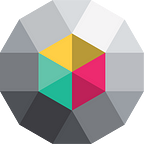Harness the power of connected data
Benefits, real world examples and tips to get started.
Not only have investigations like the Pandora Papers amazed us by exposing the finances of several rich and powerful figures from around the world, but they have also provided incredible examples of what is possible when using graph databases and graph analytics. Looking at what was achieved by connecting a monumental amount of data from around the world and dating back as far as the 1970s (2.9 terabytes of data in various formats, including written notes!), you can understand why enterprises are increasingly turning to Graph Databases and Graph Analytics to handle highly connected data and analyze relationships between things. Used by both large and small companies, graph analytics is becoming easier to deploy and is playing a more and more important role in business.
Benefits
With a graph database you can connect data as it is stored, displaying data in connections much like how we look at the world ourselves. It is made up just two elements: nodes and links. The nodes represent data points and links represent their relationships. They allow you to find not just the obvious relationships, but also the hidden ones, and that’s where you find the really interesting information.
Using visualization and analysis options, you can generate insight: discovering complex patterns, associations, anomalies and trends, or even make predictions. After all, the real world is more complex than rows and columns; it is full of relationships and networks that are more connected than ever. Making sense of these complex relationships and interdependencies is key to informed decision making.
Real World Applications
Graph solutions help organizations with many practical use cases across all industries.
It is usually applied with one or more major goals in mind: better decision making, increased quality of predictions, and creating new ways to learn and innovate. This can translate into increased customer satisfaction, faster time to results, and increased revenue. From creating recommendation engines to fraud detection, to showing the connection between different pharmaceutical drugs and their components, graphs give businesses another way to look into their data.
A few examples of Graph Solutions at work…
Supply Chain Management
An international supply chain with multiple products constantly crossing borders, oceans and regulatory landscapes is a clear match for Graph solutions. The more steps there are in the chain between the various suppliers, manufacturers, retailers and consumers, the greater the risk of inefficiencies, fraud, contamination, and unethical practices. The technical challenge of tracking every product, its journey and requirements can create incredibly large numbers of interdependent data, and a Graph’s relationship-centric approach enables firms to better manage, read and visualize their data. This gives a trackable and in-depth picture of all products, suppliers and facilities and the relationships between them.
Healthcare / Life Sciences
Pharmaceutical companies wanting to find associations across vast experimental data and medical research use a graph to merge historical data and new high-content image data. The resulting knowledge graph enables a better understanding of biology, the correlation of elements and how to better develop the next generation of medicines.
Utilities
Companies that provide utilities such as water, sewage services, electricity and natural gas can leverage graph analysis to build and maintain the most optimal utility distribution network.
Nice, but…
It can still be hard to know where to start. Here are a few tips to help you on the way to making use of your connected data:
- Identify your project — create a small cross-functional team with representation from key areas, including business and IT who can identify what business problems can be solved by graph technology. If your project has a lot of connected, interdependent information, it is a good candidate for graph solutions.
- Assess the status quo — after you’ve selected the use case, start by assessing the current state of things. Examine existing issues, problems, or opportunities, and consider how your case can help address your company concerns like cost savings, increased revenue, or risk.
- Measure success — confirm agreement across the team on your project goals and decide how you will measure success or the return on investment.
- Production plan — get input from your internal experts, data scientists, IT teams and end-users. They can make sure the right topics and issues are addressed and raise any usability concerns.
- Graph Solutions partner — working with an experienced partner can accelerate your project. They can help explore what is possible and find potential use cases. Having them on board means you’ll have a partner that understands exactly what it takes to help you achieve your business goals.
Start small, think big
Your first graph project will likely spawn many new ideas and future projects. Starting with a smaller project to gain immediate value and experience, then adding more use cases or sophisticated aspects over time is a good way to leverage the complex patterns hiding in your data and gain deeper insights into your business.
If you’d like to learn more, we’d be happy to tell you all about our experiences helping companies with graph solutions. Just drop us a line at info@qbis.ch
